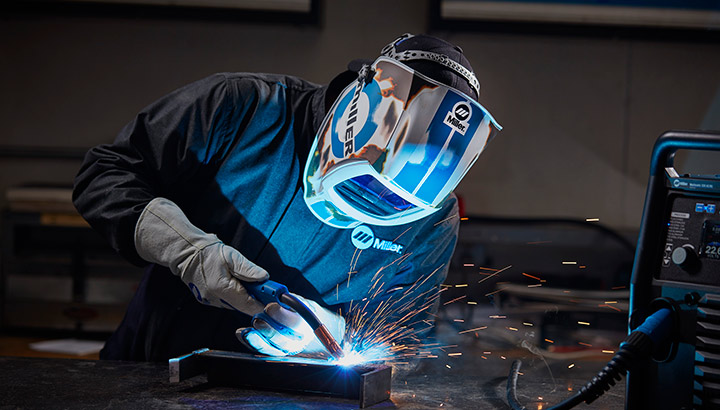The Ultimate Guide to Welding WPS Procedures: A Thorough Introduction for Welders
In the elaborate world of welding, Welding Treatment Specs (WPS) offer as the foundation of guaranteeing quality, uniformity, and safety and security in welding operations (welding WPS). As we dig into the various parts of a WPS and discover the ins and outs of qualification and certification, we will certainly reveal the essential duty these treatments play in the realm of welding.
Relevance of WPS Procedures
Understanding the significance of Welding Procedure Requirements (WPS) treatments is critical for making certain the high quality and stability of welded structures. WPS treatments offer as a roadmap for welders, describing the required actions, criteria, and materials called for to accomplish a sound weld. By adhering to WPS guidelines, welders can make sure consistency in their job, causing structurally sound and dependable welds.
One of the key factors why WPS procedures are necessary is their role in preserving weld quality and integrity. Complying with the defined welding parameters and techniques detailed in the WPS aids prevent problems such as porosity, fracturing, or incomplete fusion, which can jeopardize the strength and longevity of the weld.

Parts of a WPS
A Welding Procedure Specification (WPS) usually makes up important components that information the certain demands for performing a weld, ensuring consistency and high quality in the welding procedure. The crucial components of a WPS consist of vital variables such as base metals, filler metals, preheat and interpass temperatures, welding processes, securing gases, welding settings, and post-weld warmth therapy requirements.
Base metals refer to the products being signed up with, while filler metals are used to load the void between the base metals throughout welding. The welding procedure describes the certain technique to be utilized, whether it's gas steel arc welding (GMAW), shielded metal arc welding (SMAW), or an additional approach. Welding placements define the positionings in which welding can be carried out.

Qualification and Accreditation
Having established the necessary parts of a Welding Treatment Specification (WPS), the focus currently changes in the direction of the crucial elements of certification and accreditation in welding methods.

Qualification, on the various other hand, is the official acknowledgment of a welder's certifications by a pertinent qualification body or company. Welding certifications are typically based upon the particular welding procedures, products, and positions a welder is certified to function with. Holding a valid welding certification shows that a welder satisfies market requirements and is competent to do welding jobs to the required requirements.
Developing a WPS
To develop a Welding Procedure Requirements (WPS) that meets industry requirements, mindful factor to consider of welding processes, materials, and operational parameters is crucial (welding WPS). The very first step in developing a WPS is to determine the welding procedure to be used, such as gas steel arc welding (GMAW) or secured steel arc welding (SMAW) Once the welding process is figured out, the following crucial aspect is choosing the suitable materials, taking into consideration aspects like base steel kind, density, and joint style. Functional parameters such as welding current, voltage, travel speed, and protecting gas composition must also be carefully specified in the WPS.

Carrying Out and Checking WPS
Upon wrapping up the extensive Welding Treatment Requirements (WPS) that carefully details welding processes, products, operational parameters, and quality guarantee measures, the focus changes to successfully executing and monitoring the well-known treatments. Application entails guaranteeing that all welders entailed in the task are familiar with the WPS and follow it thoroughly during the welding procedure. try this Effective execution and tracking of the WPS are crucial for making sure the honesty, strength, and security of the bonded joints, ultimately adding to the total success of the welding project.
Final Thought
In verdict, understanding and adhering to Welding Treatment Specifications (WPS) is critical for welders to make certain high quality, consistency, and safety and security in their work. By recognizing the components of a WPS, getting correct certifications and qualifications, creating comprehensive procedures, and applying and monitoring them effectively, welders can enhance their skills and effectiveness in welding practices. Adhering to WPS procedures is necessary for producing top notch welds and conference sector requirements.
In the intricate globe of welding, Welding Treatment Requirements (WPS) serve as the backbone of useful content ensuring quality, consistency, and safety in welding operations. The welding process outlines the details method to be used, whether it's gas steel arc welding (GMAW), shielded steel arc welding (SMAW), or another method.To develop a Welding Treatment Spec (WPS) that fulfills market criteria, mindful factor to consider of welding processes, materials, and operational criteria is essential. The first action in developing a WPS is to identify the welding procedure to be utilized, such as gas steel arc welding (GMAW) or protected metal arc welding (SMAW)Upon finalizing the comprehensive Welding Procedure Requirements (WPS) that meticulously information welding procedures, link materials, operational specifications, and top quality assurance steps, the focus changes to properly implementing and keeping track of the recognized procedures.
Comments on “Comprehending Welding WPS: Comprehensive Overview for Welders”